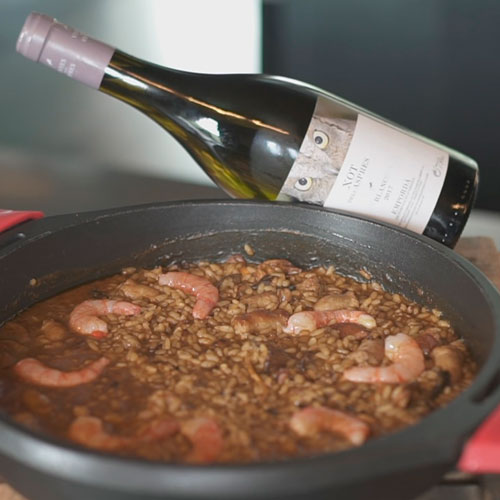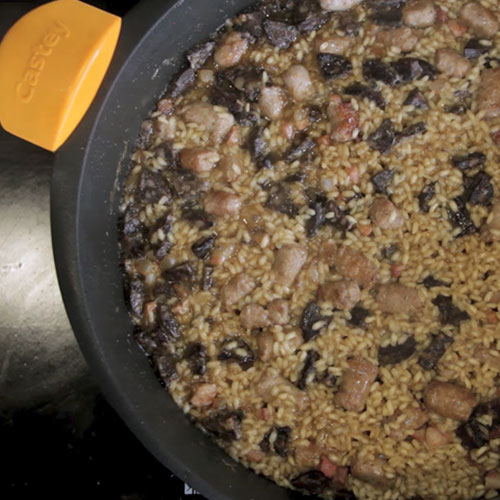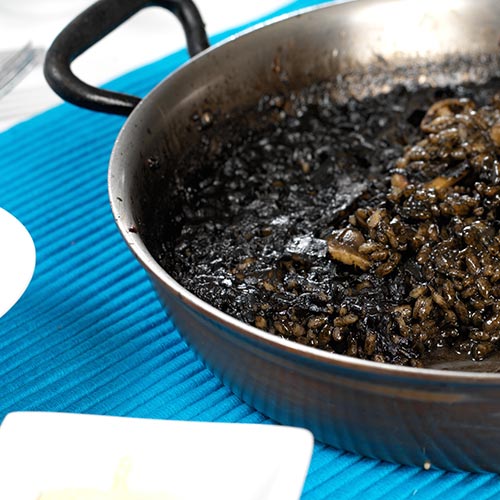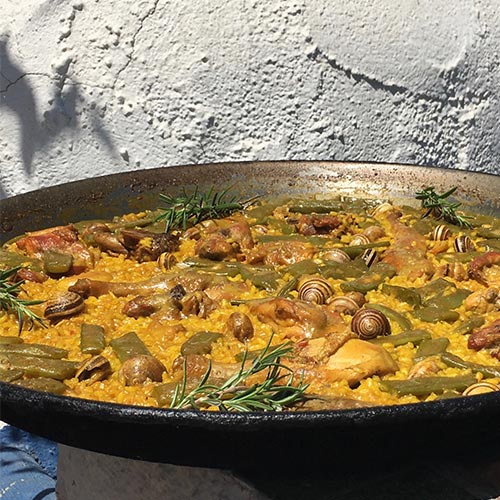
In our culture, a rice dish is a good excuse for a gathering of family or friends. If we talk about an arrossada, it is understood that it will be a massive meal. For this reason, rice is one of the main ingredients in the country’s recipes. A rice casserole, in which the allotment, farmyard, sea and mountain are combined in the tastiest and most harmonious way is the most precious thing in this region. This dish probably already existed long before we went to America, because for the local sofregit we only need garlic and onion. Indeed, rice has been grown in the Empordà wetlands since the Middle Ages.
These rice paddies cover an extensive area between the Alt and Baix Empordà. It is grown between the mouths of the Muga, Fluvià and Ter rivers, protected areas that are recognised as natural parks: the Aiguamolls wetlands in the Alt Empordà, and the Montgrí, Medes Islands and Baix Ter in the Baix Empordà. Not surprisingly, the rice paddies are categorised as environmentally sustainable farming.
We refer to Pals rice because this Baix Ter municipality is where most of the cultivated area has been for centuries, which shows the beauty of the changing landscape that each season offers. In the colder months you can enjoy the original wetlands, an eminently natural landscape. Between the end of April and the beginning of May, the fields are flooded for planting. In summer there is a bucolic landscape of flat fields of green grasses dancing in the wind and sea breezes as they ripen, until autumn, when it is time to harvest. Then work begins again to get everything ready for the start of the next rice season.
Rice with the 2023-2024 Girona Excel·lent seal
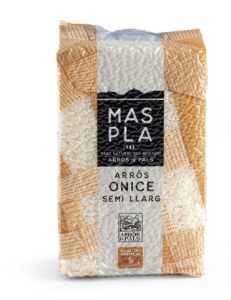
Medium-grain rice. Mas Pla – arròs semillarg
In Torroella de Montgrí, on the way to the mouth of the River Ter, you can admire the beauty of the Mas Pla rice paddies. The company has been growing and harvesting rice in the Montgrí Natural Park as part of the Agrupació de Defensa Vegetal d’Arròs de Pals (Pals Rice Protection Association) for five years. This rice is of the Onice variety which has adapted to the local climate and has a shorter cultivation cycle than other varieties. It is also harder than other rice varieties, absorbs less juice and, once cooked, is looser. Mas Pla recommends it for paellas, salads and desserts.
Company: Explotaciones Agrícolas Hebo, S.L.
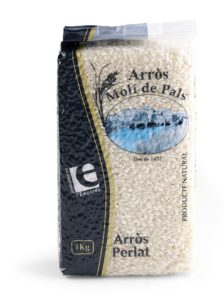
Medium grain pearl rice. Arròs perlat Molí de Pals
Molí de Pals rice is the result of an agri-environmental crop that keeps the use of fertilizers and phytosanitary products to an absolute minimum. The Parals family, owner of the historic Pals rice mill since 1984 (documented in 1452), points out that the grain of this rice is slow to form and mature, and this ensures it is more resistant, has more starch and, once cooked, retains its texture better. This means that pearl rice absorbs juices very well during cooking, making it ideal for traditional rice casseroles and broth-like rice dishes, since once cooked it does not overcook.
Company: Arròs de Pals, SL
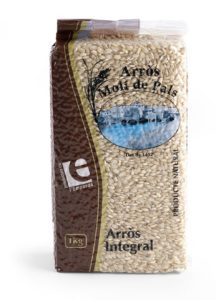
Wholegrain rice. Arròs integral Molí de Pals
Wholegrain rice is obtained from round grain varieties. Once the outer husk is removed, the grain retains most of the bran from the husk, pericarp, and skin. Therefore, this rice is a source of fibre, E and B group vitamins, and mineral salts, primarily phosphorus and magnesium. In addition, it has a lower glycaemic index than processed rice. It needs slower and longer cooking, 35 to 40 minutes, although the cooking time can be shortened by soaking the rice the day before.
Company: Arròs de Pals, SL
